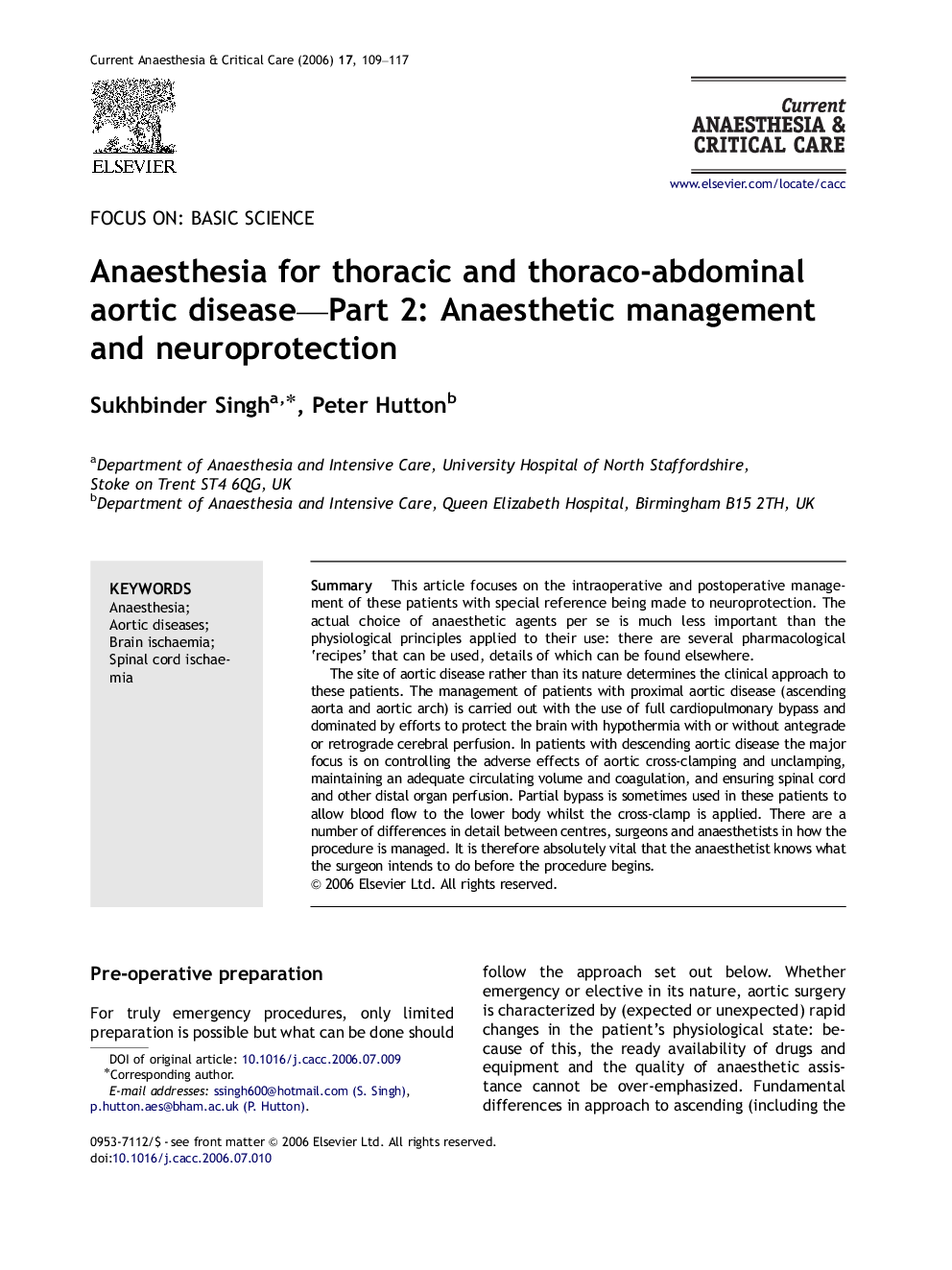| کد مقاله | کد نشریه | سال انتشار | مقاله انگلیسی | نسخه تمام متن |
|---|---|---|---|---|
| 2607768 | 1562794 | 2006 | 9 صفحه PDF | دانلود رایگان |
عنوان انگلیسی مقاله ISI
Anaesthesia for thoracic and thoraco-abdominal aortic disease-Part 2: Anaesthetic management and neuroprotection
دانلود مقاله + سفارش ترجمه
دانلود مقاله ISI انگلیسی
رایگان برای ایرانیان
کلمات کلیدی
موضوعات مرتبط
علوم پزشکی و سلامت
پزشکی و دندانپزشکی
بیهوشی و پزشکی درد
پیش نمایش صفحه اول مقاله

چکیده انگلیسی
The site of aortic disease rather than its nature determines the clinical approach to these patients. The management of patients with proximal aortic disease (ascending aorta and aortic arch) is carried out with the use of full cardiopulmonary bypass and dominated by efforts to protect the brain with hypothermia with or without antegrade or retrograde cerebral perfusion. In patients with descending aortic disease the major focus is on controlling the adverse effects of aortic cross-clamping and unclamping, maintaining an adequate circulating volume and coagulation, and ensuring spinal cord and other distal organ perfusion. Partial bypass is sometimes used in these patients to allow blood flow to the lower body whilst the cross-clamp is applied. There are a number of differences in detail between centres, surgeons and anaesthetists in how the procedure is managed. It is therefore absolutely vital that the anaesthetist knows what the surgeon intends to do before the procedure begins.
ناشر
Database: Elsevier - ScienceDirect (ساینس دایرکت)
Journal: Current Anaesthesia & Critical Care - Volume 17, Issues 1â2, 2006, Pages 109-117
Journal: Current Anaesthesia & Critical Care - Volume 17, Issues 1â2, 2006, Pages 109-117
نویسندگان
Sukhbinder Singh, Peter Hutton,